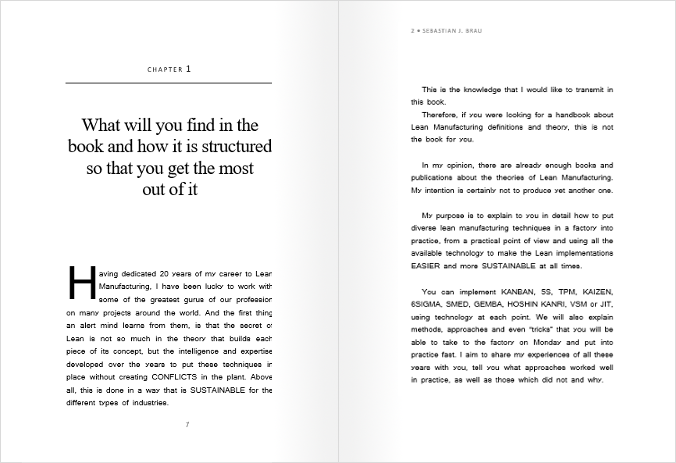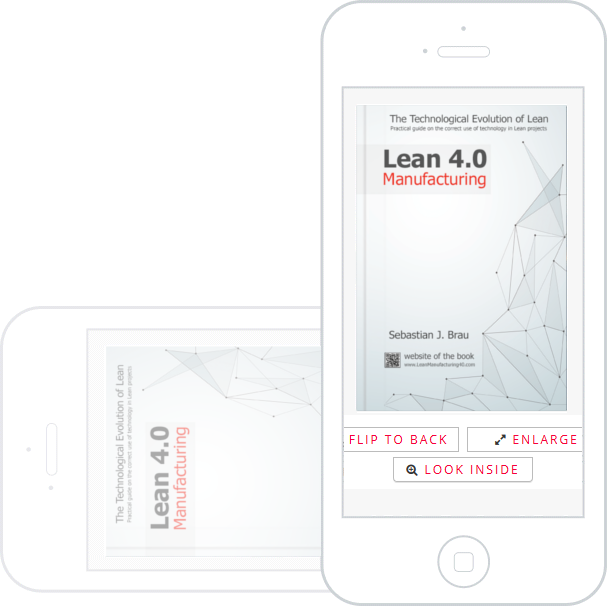You will learn to implement work tools that operators will use because they collaborate with their daily job and will be useful for them, and that by the other hand will generate the control records automatically.
With the traditional system the data is usually appointed twice: once on paper and a second time on the computer. In a paperless factory the datum is recorded only once on a touchscreen or tablet and automatically passes to the ERP. This reduces the cost by half.
A digital tool presents great solutions as it gives systems where the user is assisted. It helps to solve everyday questions that emerge in their workplace to all the personnel in the plant. In addition, it automatically gets the records as a simple consequence of the operators using assistants.
You will learn to banish the use of paper inside the factory, allowing to reduce mistakes, extra work in the collection of records, costs, and expediting to a great extent the work of operators.
This is just about seeing how we deliver the data that the ERP needs and watch where we place it so that all this information enters the system AUTOMATICALLY, without the need to do any additional work.
This way we take the LEAN method one step further, transforming the plant monitoring records in useful data for the ERP, achieving both targets in one single play, in one only move.
In this book you will find specific techniques and concrete examples to apply to your plant effectively, all in small blocks. I hope you find them useful!
You will learn to settle a digital nervous system able to detect any incidence in real time, allowing an immediate reaction to problems either with materials, or with people or machinery.
The advantage of having such a system is easy to explain. It is the same that you experience when a "sensor" in your skin lets you feel the fire and pull your hand away before you burn yourself. It is that easy and that powerful.
It is simply implemented by transforming the records that would indicate a malfunction in the production process into different alerts that would be distributed to your entire control staff: the line manager, the maintenance manager, the quality manager, operations, etc. Providing the right information to people in the plant who can interpret this information and reorganize the work in real time to achieve higher levels of productivity.
You will learn how to get the inventory monitored in real time, avoiding stock breaks and eliminating the need of making periodic inventories.
Active Inventory is a concept that presents a change in the manner that factory inventories are controlled. It proposes to move to a new model where a stock supervision system is placed in real time.
This method consists in the fact that at the very moment when the product is to be used in the plant the operator can mark any incident or mismatch of the amounts detected in the reference on his tablet. Namely, there is no wait until the end of the month to regularize this inventory but that at the time it is detected that the product is diverted from its theoretical stock, the operator marks it for review and immediately launches an alarm that starts a self-review process in a coordinated process that we call “active inventory”.
You will learn to indentify the work features that are going to bring most revenue by applying the Pareto principle in a recursive manner for the Kaizen analysis.
You should try to identify aspects of the work that you will develop that are more likely to bring in that revenue as soon as you can, to be certain that there will be a Pareto for everything you board, and search it so you can immediately start devoting more resources to those points in your analysis that have more potential.
Pareto is a universal law. It is present in the whole nature and everything that humans build. Pareto is fractal, always an asymmetric development. The fact that you focus first on Pareto will always lead to better results, not only in the long term, but also on medium and short term.
You will learn to get the productivity records of each person and work team at any time, and increase productivity by encouraging the team work and the competitiveness among teams.
Everyone knows that their respective coworkers are reporting how long it takes each one of them do each task, tasks that are perfectly stereotyped and comparable in their times, qualities and yields.
With this basic information already available, you can establish a mechanism of publication of OEEs and productivity ratios at the factory that promote healthy competition and staff motivation for a job well done and efficiently performed.
So that soon one team begins to engage and gradually tries to improve their status and not be ranked at the bottom of the list.
You will learn how to get in real time the exhaustive tracking - backward traceability, process traceability and forward traceability - and the real cost of each production order, and review them at any time.
If I happen to be reporting the materials used in each production order, and I am also leaving a comprehensive review of each resulting product that I generate, what I have is the base of a process traceability.
If in addition the product resulting from that production order is controlled, it is identified when used in a second work order along with other components, and there is a control of the processed products or raw materials that I have on the plant, then it turns out that I'm maintaining a completely arboreal traceability structure.
Besides this traceability structure is being built in real time, as an unintended result of the use of the system.




















